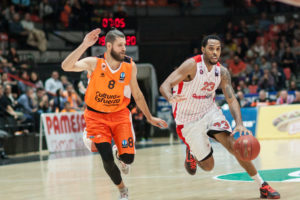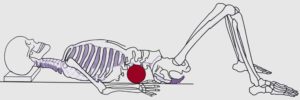
Why One Size Fits All Approaches Don’t Work
From the start of my youtube channel and blog – I have received hundreds of messages from people asking me what I did to recover from my low back problems and how I returned to exercise.
The response I often give is:
Patience with a good recovery and training program.
People are often in a bit of shock by my response. You see – people are looking for specifics on what exercise I did, what my inversion table routine was, frequency per week of exercise, etc. While exercise and traction helped me – the routine that worked for me is not going to work the same for someone else. To give a specific example:
Person A – Stands 6 foot 5, weighs 240lbs, is a recreational weightlifter and has an L5-S1 posterior lateral (right side) disc herniation. Symptoms become worse with sitting and bending over. Goals are to be pain-free and exercise without making symptoms worse.
Person B – Stands 5 foot 8, weighs 180lbs, is a professional MMA athlete and has an L4-L5 posterior lateral (left side) disc herniation. Symptoms become worse with sitting and bending over. Goals are to be pain-free and return to professional MMA.
Person C – Stands 6 foot 1, weights 240lbs, is a sedentary person and has multiple posterior central disc herniations, L3-L4, L4-L5, L5-S1; and multiple endplate fractures. Symptoms are worse with sitting, bending over and excessive compression. Also, the person has had previous shoulder surgery for a rotator cuff tear. Goals are to be pain-free and lose weight.
The above examples represent people with low back pain; however, each person is unique. Person A, B, and C are different in their anatomy, pain-triggers, injury history and goals. The fact that Person B comes from a professional sports background and doesn’t have any endplate fractures or a previous shoulder injury means you can perhaps do more training with them than Person C.
Also, Person A’s fitness level and injury history will place fewer restrictions on them when comparing them to Person C. Person C is going to be a challenge since they have more limitations (e.g., pain with compression and shoulder surgery history). An exercise such as a side plank may be fine for Person A and B but could prove too problematic for Person C.
Everyone has different requirements when it comes to a recovery or training program. People may need hip mobility work; others may need lumbar stability work. People may respond well to inversion therapy; others will not.
A good analogy would be going to the clothing store. A person that stands 7 feet is going to need to go to the big and tall section, whereas a person that stands 5 foot 8 will be fine in the traditional section of the store.
One size fits all approaches don’t work when it comes buying clothes – so why should it become acceptable when it comes to exercise and recovery?
To share with you one more example from my experience training professional basketball athletes – the demands of a center are different than a point guard. A center needs upper body strength and stability to battle for rebounds, whereas a point guard needs speed, agility, and quickness to run the offence.
Perform a lot of strength training with a center, and you may notice an increase in rebounds per game, but do a lot of strength training (e.g., slow tempos) with a point guard and you may make them slower. If you prescribe the wrong exercise program to a center or point guard – you may inhibit their ability to perform.
What you need to understand is that every person is unique and their program needs to be specific to their uniqueness (e.g., anatomy, physiology, goals, movement limitations, fitness level, etc). A failure to program to a person’s needs may hinder results or at best yield mediocre results.
To get the best results – you need to develop a program that is specific to your needs. And that may require hiring a qualified trainer or therapist. Or maybe it’s becoming educated about your body and finding what works best for you. After you have your program – you need to be patient with it. If you aren’t patient – you will only rush things and perhaps end up in a worse position.
If there is one takeaway from this post, remember that –
One size fits all approaches don’t work and at best, will yield a mediocre result.
Salute,
Remi
Thumbnail Image Licensed from “IgorVetushko/depositphotos.com”












